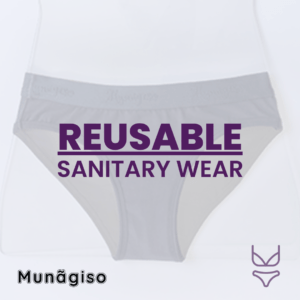Wool is a largely popular naturally derived material that has been part of the fashion industry for centuries. Harvesting and producing clothing out of wool is part of history all around the globe as a way to provide warm clothing accessibly.
Overview
Wool is a natural fibre (similar to silk and cotton) that is taken from the coat of animals such as sheep, alpacas, llamas, rabbits and goats. Wool can range from very cheap to extremely expensive depending on the type of animal it is harvested from and the location that the animals are kept.
Products such as Merino Wool are well-known for their fine, premium feel and can be found at the top end of wool production. There are a range of uses for this versatile fibre and it is extremely useful within the fashion industry.
Types of Wool
Wool is a term that can be used for the fabric made from the fleece of a range of different animals, all of which vary in quality and production method.
Sheep Wool
Sheep wool is the most prominent type of wool on the market and is often what people associate the majority of wool with. Sheep’s wool is used within many different types of garments and varies in quality and price.
Sheep wool is the basis for a lot of wool blends.
Merino Wool
Merino is a type of sheep’s wool specifically from Merino sheep that is harvested most frequently from sheep in Australia and New Zealand.
It is extremely fine and high-quality wool and can be found often within high-end garments. It has more desirable qualities than regular sheep’s wool such as increased softness and comfort.
Merino wool has a strong reputation, and can be found within premium ranges for product categories such as athleisure and knitwear.
Cashmere
Cashmere has a high natural crimp, resulting in an incredibly soft and lightweight fabric. Cashmere is very costly because it’s difficult to obtain (fibers must be combed from cashmere goats instead of sheared), and the cashmere goat produces a limited amount of cashmere wool per year.
Cashmere is luxurious but is not very durable, meaning it requires more care.
Angora Wool
Derived from the coats of rabbits – Angora wool is amongst the finest types of wool fibers in the world, making it very silky and soft. This type of wool is extremely fluffy, and since the cores of Angora rabbit hairs are hollow, it is very warm to wear.
Angora wool is also hypoallergenic as it does not contain the allergenic properties of other wool types. Angora can also be made by combining angora fibres with sheep’s wool fibres to make it cheaper and more accessible.
Alpaca Wool
Alpaca wool is a medium-weight fabric that is very durable and warm, and is well suited to hard-wearing products such as coats. Two breeds of alpaca, Huacaya and Suri, produce different types of wool – Huacaya fleece is thicker and often used for knit items, while Suri is silkier and used more in woven apparel.
Lambswool
Lambswool is taken from a baby sheep’s first shearing when it’s only a few months old, it is smooth, soft, and does not misshapen easily. Lambswool can only be produced once within a sheep’s lifetime and therefore is more expensive.
Wool Production
The majority of wool types are harvested in a similar way. The animal used for the wool production is sheered to remove the fleece coat from the rest of their body. Unlike the production of fur, the majority of the time harvesting wool does not harm the animal when done correctly.
These are the main steps for wool production:
- Shearing: the first step is to sheer the fleece coat off the wool-bearing animal.
- Scouring: the fleece (particularly sheep wool) contains fatty grease called lanolin which must be cleaned from the raw wool before it’s spun into yarn. This is done by soaking the wool in warm water, and can be sped up using chemicals.
- Sorting: once scoured, the clean wool is sorted and then put into bales ready for the next steps
- Carding: the raw fibres are separated and straightened into long strands in order to make it easier to spin later on. Carding can be done by hand or using carding machines.
- Spinning: using a spinning machine the wool is then spun into yarn through either one of two spinning systems: the worsted system or the woolen system. Worsted wool has the air squeezed out of it, creating a smooth, dense, and even wool. Woolen wool is spun with air between the fibers, creating a lighter, fuzzier, and irregular wool. After the wool yarn is formed, it’s wrapped around cones or drums ready for weaving.
- Weaving: yarn is ready to be woven into wool fabric. These are usually woven using a looser plain weave pattern, where worsted yarns are ideal for a more tightly woven twill weave pattern.
- Finishings: wool manufacturers can add finishes to change the outcome of the wool, some of these include decating where heat is used to shrink-proof the item.
Where is wool produced?
Wool is produced worldwide, but the leading countries typically host climates or land mass that make raising livestock easy and accessible.
Large producers of wool include Oceania countries Australia and New Zealand, with around 25% of the world’s wool being produced in Australia and New Zealand with 11%. So called ‘greasy wool’ is largely produced here, including sheep and alpaca wool types.
Australian wool exports in 2016-17 were valued at $3.615 billion; this reflects the continuing strong global demand for Australia’s wool, which is regarded as among the world’s best.
Wool is produced in all Australian states except the Northern Territory. New South Wales produces the greatest volume of wool, followed by Victoria, Western Australia and South Australia. Sheep breeds such as Merino thrive here, making is a huge player in the world wool market.
Wool is also frequently produced in China – with 18% of production, and America – with 17% of production.
Wool Fabric Properties
UV Protection
Sheep wool has a natural UV protection factor of up to 30. Wool naturally absorbs the suns UV rays before it can make contact with your skin; by wearing wool you will be protected against the sun harmful rays.
Antibacterial
The thin waxy coating of wool fibre contains fatty acids that inhibit the growth of mold, mildew and bacteria. The same coating repels water that can cause mildew and mold to grow.
This means that woolen items do not need regular washing and will smell fresh after repeated use, unlike synthetic fibres.
Stains
The waxy outer coating of wool helps to repel liquids, meaning if you spill anything on your knitwear it is most likely to roll off, and what is left is easily wiped off.
Ease of Care
It’s a well known fact that woolen items do not need regular washing. Bacteria causing odour is naturally inhibited by fatty acids that coat wool fibre.
Static, which attracts lint, dirt and dust, is also inhibited by this waxy coating. The scaly surface area of fibre acts to block dirt and stains from being absorbed. Instead, particles sit on top which means they are much easier to remove.
Heat Retention
Wool is renowned for its ability to regulate body temperature. In the winter, wool’s insulating qualities trap dry air and warmth near the skin. Wool’s natural insulating quality and its ability to shed water results in a fabric that keeps the body warm, even when it’s raining. In the summer, wool’s coil-like shape pulls excess heat and moisture from your skin, helping the wearer to stay cooler.
Insulation
The inner core of wool fibers can absorb just under half of its own weight in moisture. Not until wool is saturated with 60% of its own weight will it feel wet to the touch. Since it retains 80% of its insulating value even when saturated, wool will keep you warm even when wet.
Durability
Wool can withstand being bent 20,000 times without breaking. In comparison, cotton breaks after 3,000 bends, silk after 2,000, and rayon can only be bent 75 times without breaking. Its natural elasticity means that the fibres are less likely to break, and fabric made from wool less likely to tear. The ability of wool to “spring back” into shape, means that woolen garments tend to retain their shape better than garments made from other fibres.
Wool Fabric Products
Outerwear
Whatever the season, wool’s insulation layer naturally adjusts to your body’s thermal balance, improves perspiration comfort and keeps you drier from the inside, making it perfect for high-performance, outerwear apparel. Being exceptionally lightweight, it provides all the comfort without the bulk.
Activewear
Merino wool is a high-performance fibre. Forget that scratchy itchy feeling, this is designed to be worn comfortably next-to-skin. Circular knits create seamless garments reducing chafing. Moisture management and thermo-regulating properties keep odours at bay. It’s also used in compression garments and even running shoes.
Knitwear
Wool is often the main component of jumpers and cardigans, and can be found frequently within the majority of peoples wardrobes.
Accessories
Wool is frequently used in accessories such as socks, tights, scarves, hats and gloves as it is great at keeping you warm.
Soft Furnishings
Wool can be found in upholstery such as stuffing and covers and used in products such as blinds, curtains, lampshades, cushions, and wallpapers, bedding and pillows.




